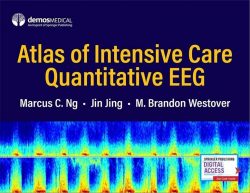The volume aims at providing an overview of cutting-edge methods and protocols used in neuroscience and neurological research. Neurotransmitter Transporters: Investigative Methods will be of interest to scientists, graduate students, and advanced undergraduates who seek an overview of methods and protocols in this field of neuroscience. It will also be of interest to physicians who are carrying out imaging and postmortem studies of neurotransmitter transporters in the human brain. Written for the popular Neuromethods series, chapters include the kind of detail and key implementation advice that ensures successful results in the laboratory.
Authoritative and practical, Neurotransmitter Transporters: Investigative Methods aims to ensure successful results in the
further study of this vital field.
Part I: Recent Improvements
in LV Construction, Production, and Transduction
1. Construction of Modular Lentiviral Vectors for Effective Gene
Expression and Knockdown
Angeline De Bruyns, Ben Geilin, and David Dankort
2. Development of Inducible Molecular Switches Based on All-In-One
Lentiviral Vectors Equipped With Drug Controlled FLP Recombinase
Tobias Maetzig and Axel
Schambach
3.
Production Of Retrovirus-Based
Vectors In Mildly Acidic Ph Conditions
Nathalie Holic And David Fenard
4. Optimized Lentiviral
Transduction Protocols by use of a Poloxamer Enhancer, Spinoculation and
Scfv-Antibody Fusions To VSV-G
Nataša Anastasov, Ines Höfig, Sabine Mall, Angela M. Krackhardt,
and Christian Thirion
Part II: New LV Targets
and Applications
5.
Transduction of Murine
Hematopoietic Stem Cells with Tetracycline-Regulated Lentiviral Vectors
Maike Stahlhut, Axel Schambach, and Olga
S. Kustikova
6. Introduction of Shrnas, Mirnas or Antagomirs into
Primary Human Liver Cells Through Lentiviral Vectors
Jessica
K. Rieger and Maria Thomas
7. Production and Concentration of Lentivirus for Transduction of Primary
Human T Cells
Alan Kennedy and Adam P. Cribbs
8. Generating Transgenic Mice by Lentiviral Transduction of Spermatozoa
Followed by In Vitro Fertilization and Embryo Transfer
Anil Chandrashekran, Colin Casimir, Nick Dibb, Carol Readhead, and Robert Winston
9. The LAM-PCR Method to Sequence LV Integration Sites
Wei Wang, Cynthia C. Bartholomae, Richard Gabriel, Annette
Deichmann, and Manfred Schmidt
10. Conditional Rnai using the Lentiviral GLTR System
Elisabeth Pfeiffenberger and Stephan Geley
11. Lentiviral Vectors for the Engineering of Implantable Cells Secreting
Recombinant Antibodies
Aurélien Lathuilière and Bernard L. Schneider
III. Integrase-Mutant
Lvs
12. Transient Expression of Green Fluorescent Protein in Integrase-Defective
Lentiviral Vector Transduced 293T Cell Line
Fazlina Nordin, Zariyantey Abdul Hamid, Lucas Chan, Farzin
Farzaneh, and MK Azaham A Hamid
13. Intrastriatal Delivery of Integration-Deficient Lentiviral Vectors in a
Rat Model of Parkinson’s Disease
Ngoc B. Lu-Nguyen, Martin Broadstock, and Rafael J. Yáñez-Muñoz
14. Development of Lentiviral Vectors for Targeted Integration and Protein
Delivery
Diana Schenkwein and Seppo Ylä-Herttuala
Part IV: Production,
Detection, and Engineering of Exosomes
15. Biogenesis and Functions of Exosomes and Extracellular Vesicles
Florian Dreyer and
Andreas Baur
16. Generation, Quantification, and Tracing of Metabolically Labeled Fluorescent Exosomes
Carolina
Coscia, Isabella Parolini, Massimo Sanchez, Mauro Biffoni, Zaira Boussadia, Cristiana
Zanetti, Maria Luisa Fiani, and Massimo Sargiacomo
17. Cardiac Myocyte Exosome Isolation
Zulfiqar A. Malik and Anne A. Knowlton
18.
Incorporation
of Heterologous Proteins in Engineered Exosomes
Francesco Manfredi, Paola Di
Bonito, Claudia Arenaccio, Simona Anticoli, and Maurizio Federico
19. Exosome-Mediated Targeted Delivery of
Mirnas
Shin-Ichiro
Ohno and Masahiko Kuroda
Includes cutting-edge methods and protocols





